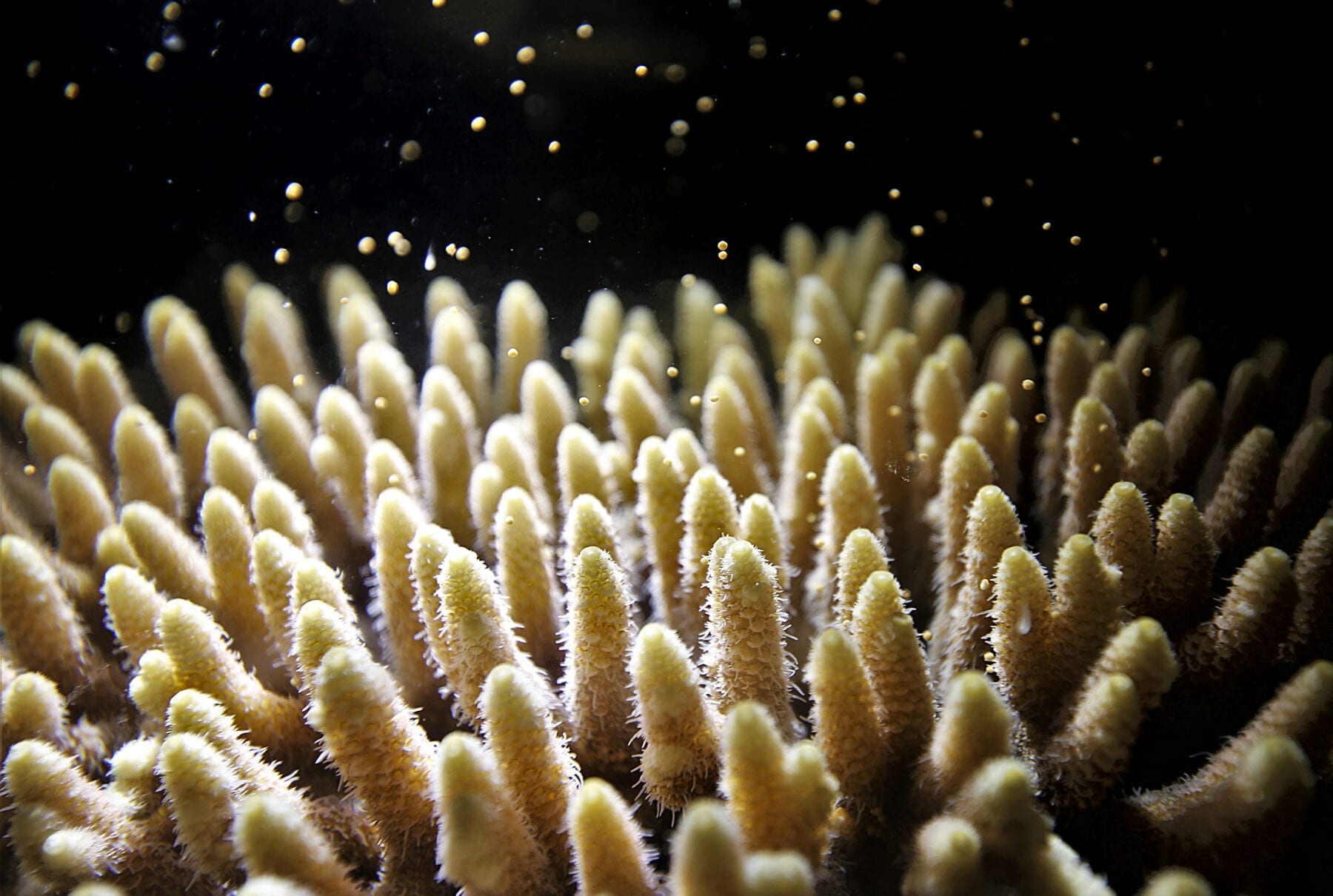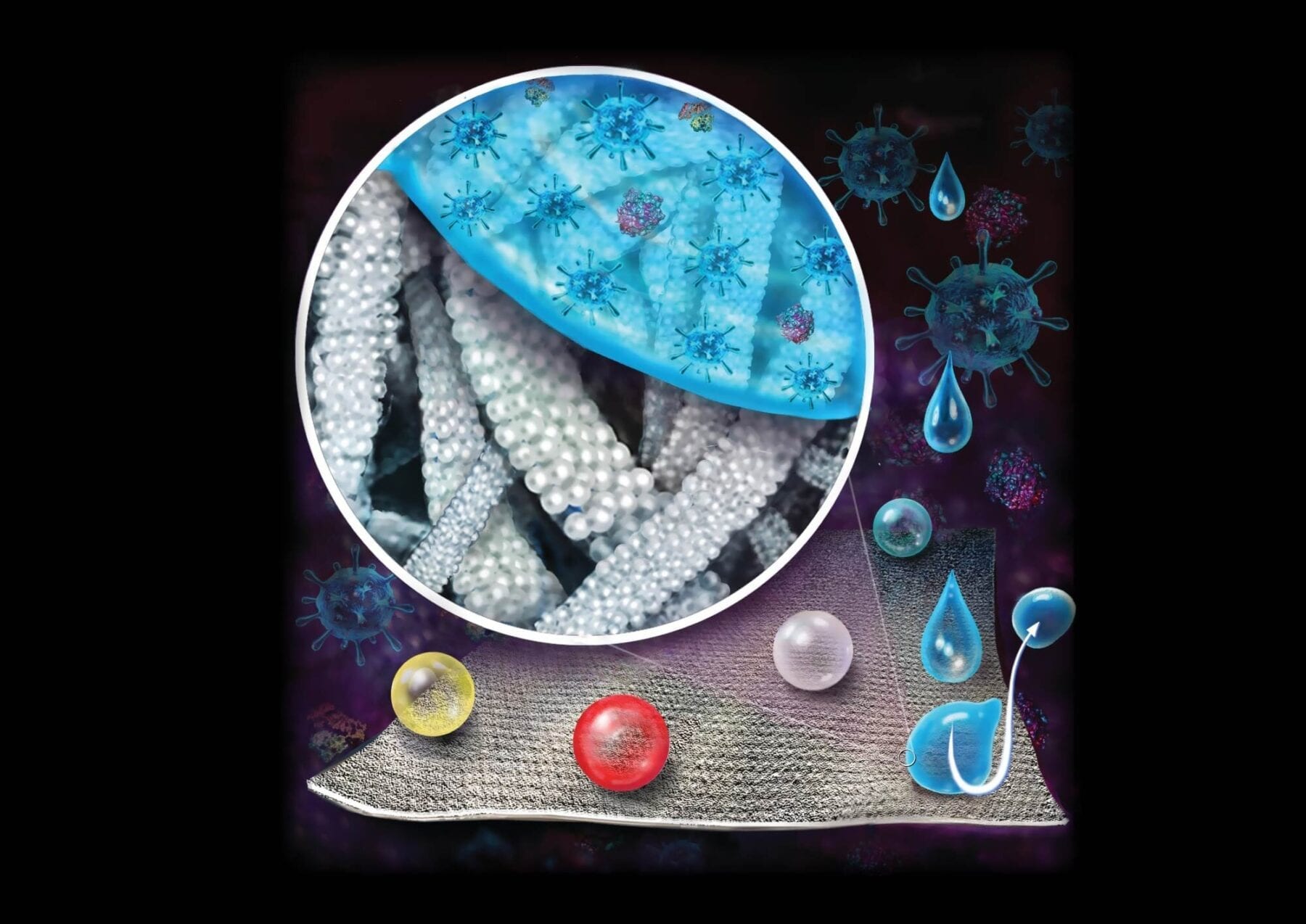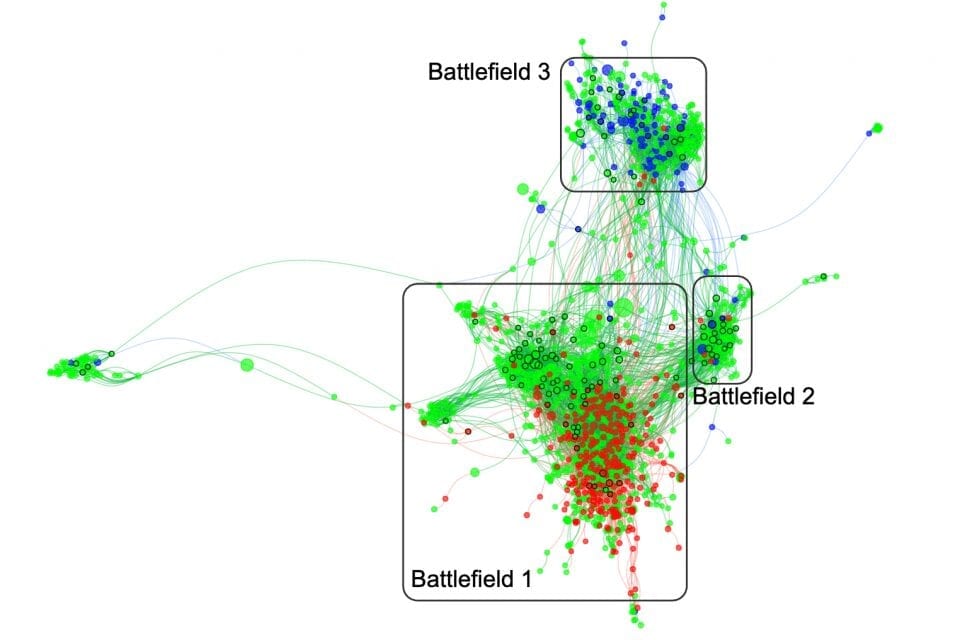The coral releases bundles of eggs and sperm for spawning into the water column. After cross-fertilization, the coral larvae develop from the cross-fertilized eggs and then take up their important algal symbionts for nutrient exchange (credit: Patrick Buerger).
A team of scientists has successfully produced in a laboratory setting a coral that is more resistant to increased seawater temperatures.
The team included researchers from CSIRO, Australia’s national science agency, the Australian Institute of Marine Science (AIMS) and the University of Melbourne.
Corals with increased heat tolerance have the potential to reduce the impact of reef bleaching from marine heat waves, which are becoming more common under climate change.
“Coral reefs are in decline worldwide,” CSIRO Synthetic Biology Future Science Platform (SynBio FSP) science lead Dr Patrick Buerger said.
“Climate change has reduced coral cover, and surviving corals are under increasing pressure as water temperatures rise and the frequency and severity of coral bleaching events increase.”
The team made the coral more tolerant to temperature-induced bleaching by bolstering the heat tolerance of its microalgal symbionts – tiny cells of algae that live inside the coral tissue.
“Our novel approach strengthens the heat resistance of coral by manipulating its microalgae, which is a key factor in the coral’s heat tolerance,” Dr Buerger said.
The team isolated the microalgae from coral and cultured them in the specialist symbiont lab at AIMS. Using a technique called “directed evolution”, they then exposed the cultured microalgae to increasingly warmer temperatures over a period of four years.
This assisted them to adapt and survive hotter conditions.
“Once the microalgae were reintroduced into coral larvae, the newly established coral-algal symbiosis was more heat tolerant compared to the original one,” Dr Buerger said.
The microalgae were exposed to temperatures that are comparable to the ocean temperatures during current summer marine heat waves causing coral bleaching on the Great Barrier Reef.
The researchers then unveiled some of the mechanisms responsible for the enhanced coral bleaching tolerance.
“We found that the heat tolerant microalgae are better at photosynthesis and improve the heat response of the coral animal,” Professor Madeleine van Oppen, of AIMS and the University of Melbourne, said.
“These exciting findings show that the microalgae and the coral are in direct communication with each other.”
The next step is to further test the algal strains in adult colonies across a range of coral species.
“This breakthrough provides a promising and novel tool to increase the heat tolerance of corals and is a great win for Australian science,” SynBio FSP Director Associate Professor Claudia Vickers said.
This research was conducted by CSIRO in partnership with AIMS and the University of Melbourne.
The Latest Updates from Bing News & Google News
Go deeper with Bing News on:
Directed evolution
- Rihanna Shares New Details About Her Long-awaited Album
*Rihanna shared new details about her long-awaited album and its inspiration in a new interview with Extra TV. “It’s gonna be amazing,” she said of the album. “It has to be—that is the only reason ...
- ‘The Sopranos’ Documentary to Premiere at Tribeca 2024: Check Out Full Talks Lineup
The Tribeca Festival is celebrating the monumental anniversaries of two Italian-American classics: series “The Sopranos” and Martin Scorsese’s “Mean Streets.” The 2024 Tribeca Festival, presented by ...
- Tribeca Sets Conversations With Martin Scorsese, Robert De Niro, Steven Spielberg and More
Tribeca Festival has revealed its lineup of talks and reunions with Martin Scorsese, Robert De Niro, Judd Apatow, Kieran Culkin and more.
- Anuj Gandhi's Exemplary Leadership in Industrial Evolution and Infrastructure Development
Currently, his attention is directed towards revolutionising the expansive track ... dedication stand as a testament to his enduring impact on India's industrial evolution, rendering him a deserving ...
- GRIT Comes to Hollywood Fringe in June
Get Access To Every Broadway Story Unlock access to every one of the hundreds of articles published daily on BroadwayWorld by logging in with one click. GRIT, a one-woman show written and performed by ...
Go deeper with Google Headlines on:
Directed evolution
[google_news title=”” keyword=”directed evolution” num_posts=”5″ blurb_length=”0″ show_thumb=”left”]
Go deeper with Bing News on:
Coral bleaching
- ‘Pale’ of gloom in Lakshadweep as mass bleaching hits coral reefs
KOTTAYAM: Alarm bells are ringing in Lakshadweep as the coral reefs there are showing worrying signs of mass bleaching (coral mortality). The phenomenon, a clear indication of severe heat stress on ...
- The fourth mass coral bleaching
In many areas of the oceans, coral reefs are losing their colour and threatening to die – the cause is the high temperatures of the world's oceans ...
- Great Barrier Reef’s worst bleaching leaves giant coral graveyard: ‘It looks as if it has been carpet bombed’
Scientists stunned by scale of destruction after summer of storm surges, cyclones and floods ...
- A Coral-Bleaching Event is Devastating Reefs Globally: the Spiritual, Pyschological and Cultural Toll
The world’s corals have reached a grim milestone, with scientists across the world confirming the fourth global bleaching event on record. In April 2024, ...
- Satellites watch as 4th global coral bleaching event unfolds (image)
On a bi-weekly basis, the Allen Coral Atlas processes Sentinel-2 data for regions that NOAA's Coral Reef Watch daily monitoring program independently flags as potential bleaching events. Then, based ...
Go deeper with Google Headlines on:
Coral bleaching
[google_news title=”” keyword=”coral bleaching” num_posts=”5″ blurb_length=”0″ show_thumb=”left”]











